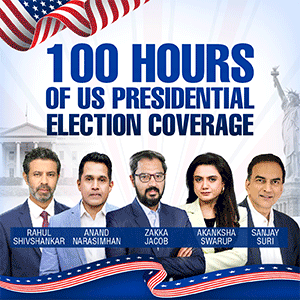MUMBAI: An anticipated surge in the household penetration of next-generation Internet-connected devices indicates solid consumer interest in new content to experience on these devices, according to a new study ‘Connected Devices and Services: Reinventing Content‘ presented by global consulting firm Bain and Company at the Forum d‘Avignon.
However, the study finds that while consumers are inclined to increase their adoption of online content for video consumption, video games, live entertainment and cultural activities, media companies and cultural institutions face stiff competition for incremental consumer spending unless new business models and ‘ambitious content‘ are created.
Bain finds that the biggest shift in the connected content experience will come in video. Half of respondents in the US and UK intend to rely more on search engines to find content, while one-third plan to use their network of friends to choose their favourite ‘must see TV‘. The latter figure jumps to 45 per cent for consumers in India and China, although lack of infrastructure will limit the ability of many to view video on connected devices, particularly in India.
Fictional programming also lends itself particularly well to such a transition according to the survey, and our increasing connectedness with the Internet could also accelerate the development of short formats born on the web. Both amateur and professional webisodes have attracted sizeable, albeit still limited, audiences online. Thirty to 45 percent of those surveyed in Western markets expressed interest in such formats on connected devices, though nearly two-thirds are not willing to pay. In contrast, approximately three-quarters of those surveyed in India and China expressed interest in webisodes.
Bain‘s survey of 3,000 consumers in India, France, the UK, the US and China suggests that a high degree of consumer enthusiasm may have limited incremental profit potential for businesses unless new innovative ways for experiencing content are developed.
Bain‘s Media and Entertainment Practice in Europe head and lead author of the study Patrick Behar said, "The permanent media revolution continues. But media and entertainment companies must pursue aggressive content development and diversification strategies to unlock new consumer spending."
Video games are fertile ground for creating innovative content experiences. Forty percent of those surveyed in Western markets use a connected console or terminal and more than 60 percent of the occasional players surveyed said that they were likely to increase their game playing. Yet a generation gap will remain amongst gamers while 60 per cent of those under age 35 see themselves playing more on connected devices, fewer than 25 percent of those older than 55 agree.
Other cultural and entertainment activities, such as live entertainment and visual arts, currently have limited online options. While approximately two-thirds of Western consumers expressed strong interest in connected cultural experiences, fewer than one-third envision spending more time on such activities. Many live performances attract only small, niche audiences, which restricts the availability of options that can be produced profitably. Along similar lines, three-quarters of those planning to visit museums more frequently due to connected content are already regular visitors, whereas fewer than 18 per cent of non-visitors intend to allocate more time to cultural institutions due to connected experiences. That said, roughly four times as many people said that they were willing to pay for a smart phone/tablet application as an improved museum audioguide than those paying for a museum audioguide today.
"Significant change lies ahead for the media and entertainment industry as content platforms, new entrants, and incumbents battle for profits and market share," concluded Behar.






